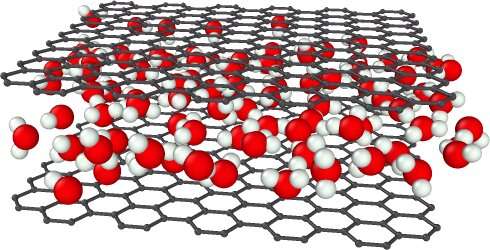Water nanoproperties as a key factor for sanitation

Living organisms, viruses, and technological devices, have water layers between their cells or parts and can die or stop working when dehydrated. But why water and not any other fluid? What makes water unique under such conditions when it is in these tiny structures?
In an article published in the journal ACS Nano, researchers from the University of Barcelona and the University La Sapienza of Rome explain why the water moves faster in a pore tinier than a one-millionth of hair than free water, while other fluids do not.
"It all depends on the peculiar hydrogen bond interaction of water and this might be a key factor contributing to the solution of one of the Sustainable Development Goals defined by the United Nations, the one about clean water and sanitation", explains Giancarlo Franzese, from the Institute of Nanoscience and Nanotechnology of University of Barcelona (IN2UB).
Actually, in water treatment and sanitation, there is a lot of research on the nanometer-size graphene pores. Furthermore, the result of this joint project between the UB and La Sapienza relates to the switching behavior observed in a hydrated graphene nano-memristor, that is a nanotechnology device where the electric charge rules the magnetic flux, when the confined water changes from one to more layers.
"Nanoconfinement can drastically change the behavior of liquids, puzzling us with counterintuitive properties. It is relevant in applications, including decontamination and crystallization control", says Carles Calero from the IN2UB. In the study, researchers compare, using molecular dynamics simulations, three different liquids in a graphene slit pore: a simple fluid, such as argon; a molecular fluid, such as CO2 or a liquid metal, and water. The three fluids, under similar subnanometric confinement, behave differently from each other, opening the way for possible applications with nanopores, for example, for the elimination of pollutants.
More information: Fabio Leoni et al, Nanoconfined Fluids: Uniqueness of Water Compared to Other Liquids, ACS Nano (2021). DOI: 10.1021/acsnano.1c07381
Journal information: ACS Nano
Provided by University of Barcelona





















